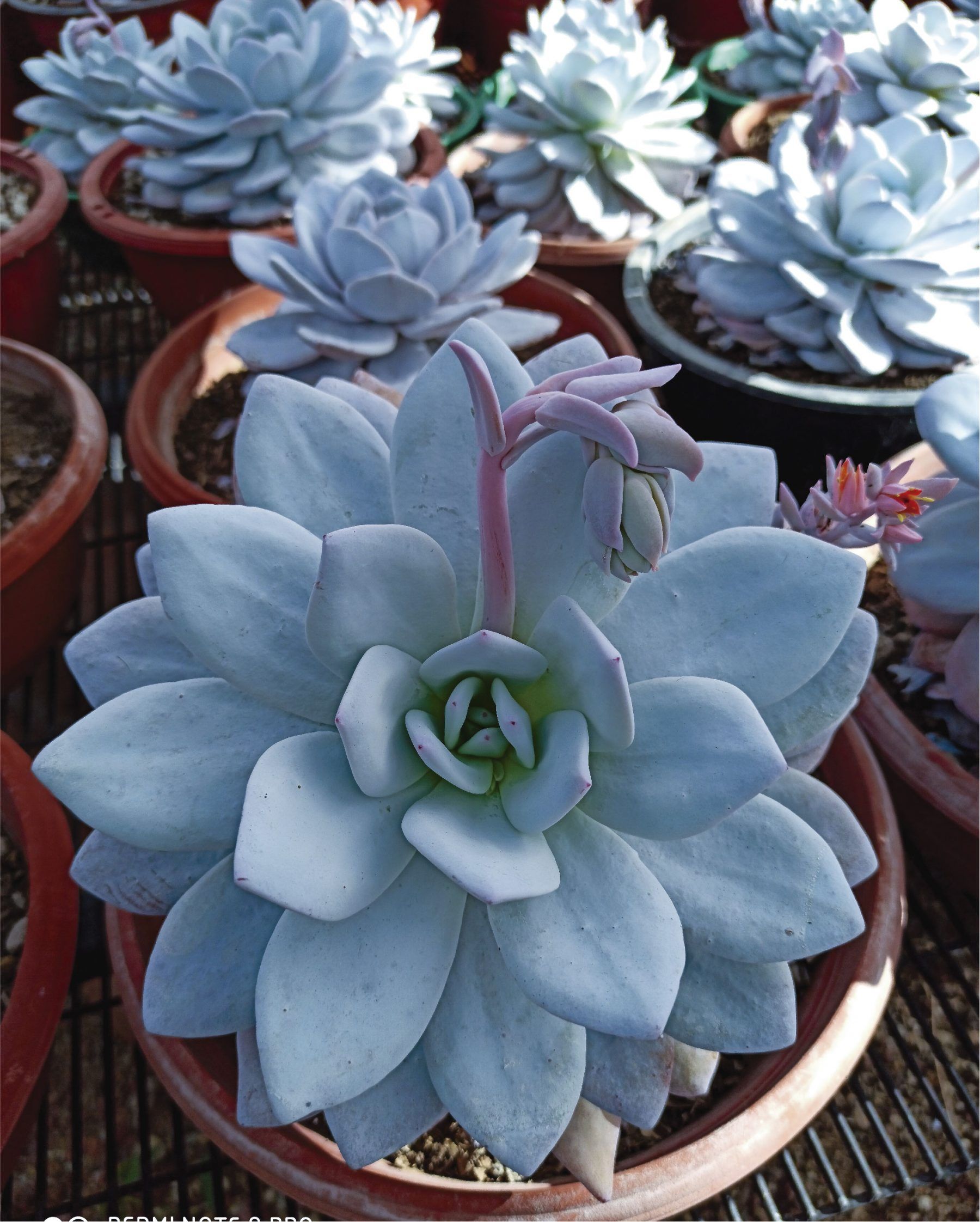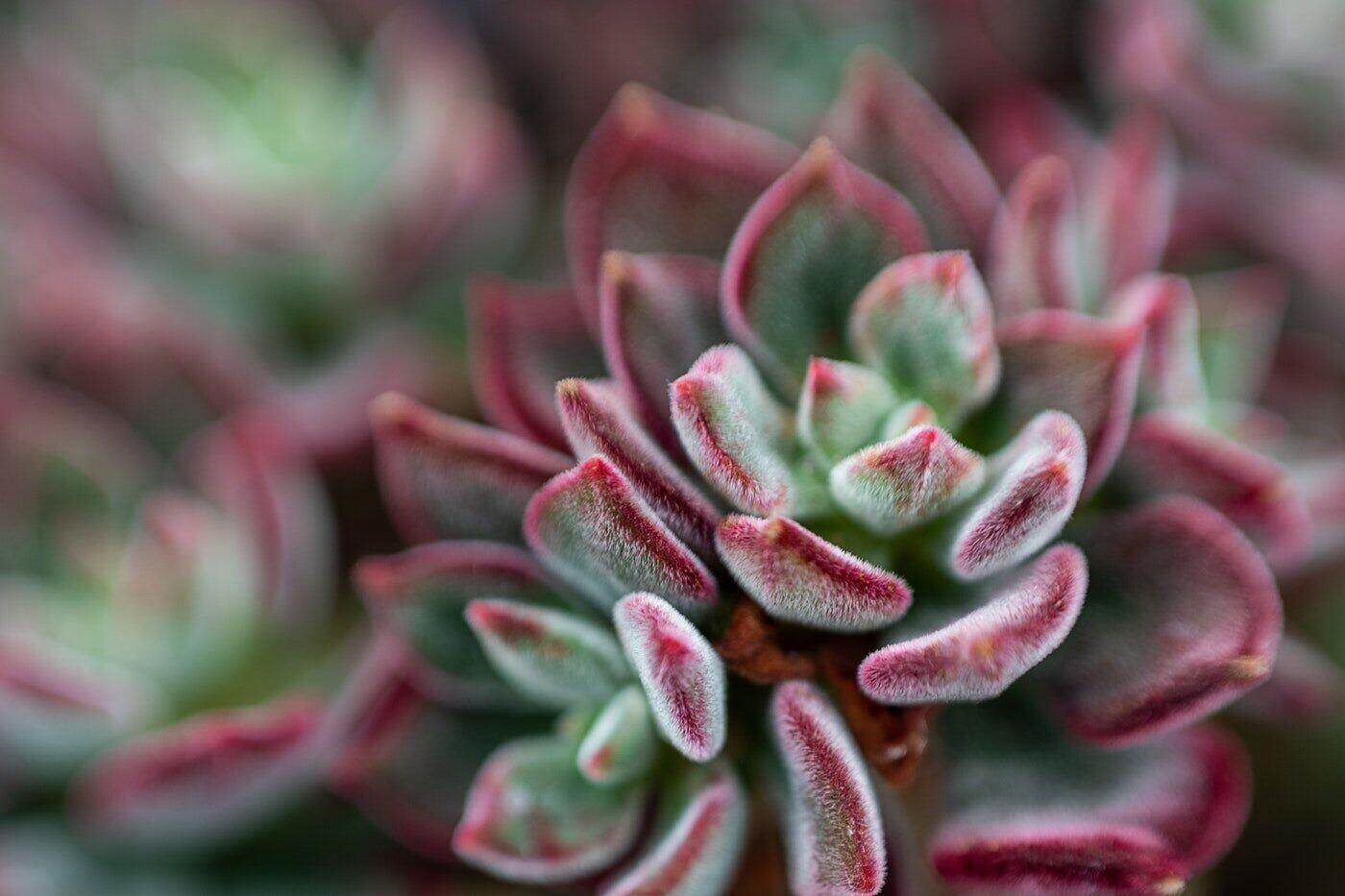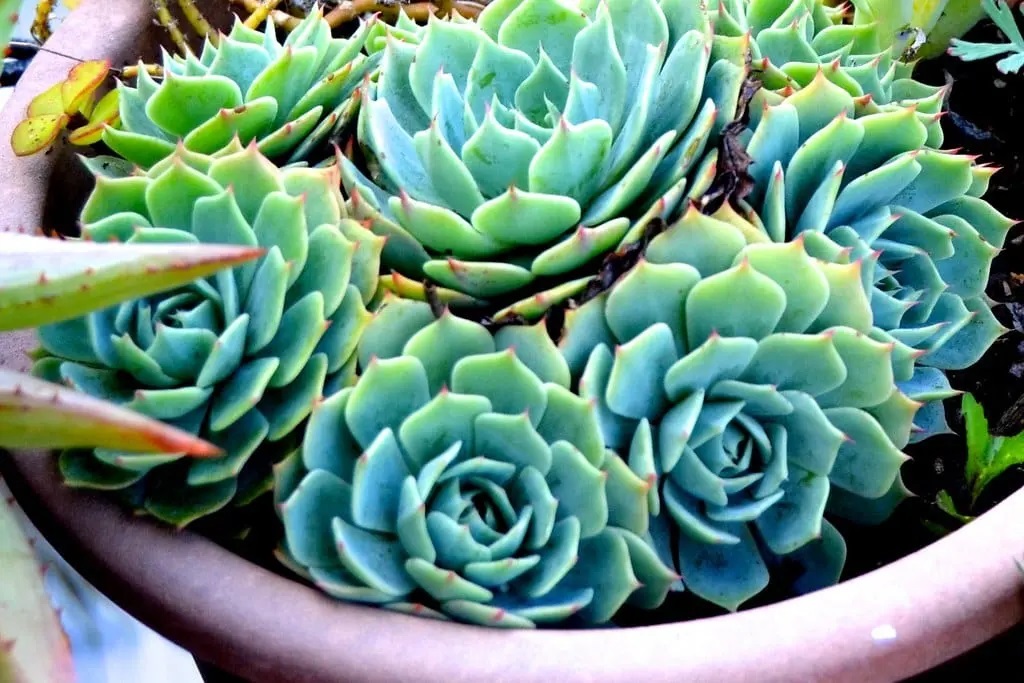Echeveria Perle von Echeveria, Succulents, Plants
ECHEVERIA en flor BOTÀNIC SERRAT
Echeveria is a genus of flower-shaped evergreen succulents native to the mountain ranges of Central America and South America. They come in a variety of stunning shapes and colors and are widely regarded as some of the most beautiful succulents.

SUCULENTA ECHEVERIA SUPER PRIMAVERA POTE 7
echeveria, (genus Echeveria), genus of about 150 species of succulent plants in the stonecrop family (Crassulaceae), native from Texas to Argentina.Many are popularly called hen-and-chicks because of the way new plantlets, or offsets, develop in a cluster around the parent plant.The usually broad fleshy leaves have waxy, velvety, or powdery surfaces and are often iridescent and sometimes red.

Echeveria 'Primavera' 1" Freckled Succulent Plant True Succulents
The Painted Echeveria features beautiful deep green rosettes and stems decorated with vivid red lines. This attention-grabbing plant grows erect rosettes up to 5 inches wide that can stand up to 2 feet tall in clumps up to 3 feet wide. Echeveria nodulosa can stand out in any arrangement just as well as it creates its own complete display.

Echeveria Perle von Echeveria, Succulents, Plants
Echeveria Abalone care is easy. The plant is one of the easy succulents to take off. It requires well-draining soil and does well with succulent soil mix. Water the succulent only when the top inches of the soil is dry. Provide a thorough watering rather than misting.

esposizione soleggiata temperatura minima 0°C terriccio drenante
The Best Echeveria Types to Grow. 1. Topsy Turvy Echeveria. Popular for its unique spoon-shaped, blue-green leaves with a touch of silver hue. This fast-growing succulent does well only in a warm climate. 2. Blue Frills Echeveria. The blue-green leaves of this Echeveria have ruffled edges, with symmetrical coral margins.

Echeveria Pulvinata Inicio de la primavera, Primavera, Floracion
How to care for echeveria plants: For echeverias to thrive, grow in bright indirect light and plant in well-draining cactus/succulents potting soil. Only water when the topsoil is completely dry and keep around 40% - 50% humidity. The ideal temperature range is between 65 and 80°F (18 - 27°C).

Echeveria Guía de Jardín
Blue Rose Echeveria (Echeveria Imbricata) Blue rose echeveria (echeveria imbricata) The Blue Rose Echeveria ( Echeveria imbricata) is one of the most popular varieties of Echeveria. Its beautiful powder blue leaves are a treat to behold. The rosette shape is compact and can reach up to 8 inches in diameter.

Le Jardin Cactos e Suculentas
Echeveria is a large genus of tropical flowering succulent plants that is native to the mountainous ranges of Central and South America. Echeverias are one of the most popular succulents and are frequently featured in succulent gardens, floral arrangements, terrariums, artwork, and even wedding cakes.

Echeveria 'Primavera' 1" Succulent Plant True Succulents Plant Co.
Table Of Contents An Echeveria plant can grow as branching, shrubby succulents, or stemless, low-growing plants. They have fleshy leaves growing in symmetrical rosettes that can reach up to 12 inches in diameter. Depending on the variety, the leaves can vary in color from glabrous grey-green, deep blue, burgundy, to neon pink.

Variegated Echeveria Black Prince / Echeveria Bess Bates Etsy
About Echeverias Here you'll find expert advice to help you grow echeverias perfectly, with a gallery of 150+ beautiful, notable species and cultivars. Learn about the plants' native habitat, optimal care, light and water requirements, flowering, soil, fertilizer, pests, and propagation. Origin

TODO sobre las Echeverias Cactus y Suculentas. Como son, etc...
Painted Echeveria Echeveria nodulosa. Size: 3 to 4 inches tall and 5 inches in diameter; clumps to 1 to 2 feet tall and 2 to 3 feet wide. Color: Pale blue-green and burgundy-red foliage, green flower stems and bracts, coral pink and yellow flowers. Named for its foliage that appears to be painted. Vigorous rosettes produce a profusion of offsets.

Echeveria Primavera YouTube
The Spruce / Adrienne Legault Light Echeverias require a substantial amount of light to thrive. They need at least four to five hours of bright, direct sunlight daily—ideally six. If echeverias do not receive full sun, they will become elongated and leggy, and it is unlikely they will flower.

Echeveria ColorataEcheveria Lindsayana Para Mi Jardín
Echeveria spp.. Colorful and ornamental, easy-care Echeveria species, hybrids, and cultivars are flowering succulents that thrive on neglect and arid conditions in the garden.. They can be raised as houseplants as well. Highly valued for their unique, thick leaves, echeveria is widely bred and available in a range of handsome shades, from icy blue-greens to rich reds and purples.

5 curiosidades de la Echeveria. Vivero Magnoliophyta
Clumps of small, tight, grayish blue-green stemless rosettes that grow up to 6" tall. Echeveria 'Perle von Nurnberg' Big milky-blue rosettes with pinkish highlights, named for a 1930's German succulent grower. In summer, yellow-tipped, coral-pink flowers appear on foot-tall spikes, up to six times a year. Echeveria agavoides

Guía de la Echeveria Cómo cuidar estas flores
An echeveria is a succulent plant native to the desert regions of the American Southwest and Central America. Though there are hundreds of varieties to choose from, they all have similar rosette-shaped foliage made up of thick, fleshy leaves. They are slow-growing and, though size can vary by species, they typically get no larger than 12".

Todos los trucos que necesitas para llenar tu casa de primavera
Description: Echeveria plants are prized for their rosettes with leaves that come in a range of colors, from green to blue-gray, pink to purple, and sometimes featuring beautiful, vibrant edges. The leaves are fleshy and succulent-like and can often be covered in a powdery wax or tiny hair. Growth Habit: These plants have a neat, rosette growth.